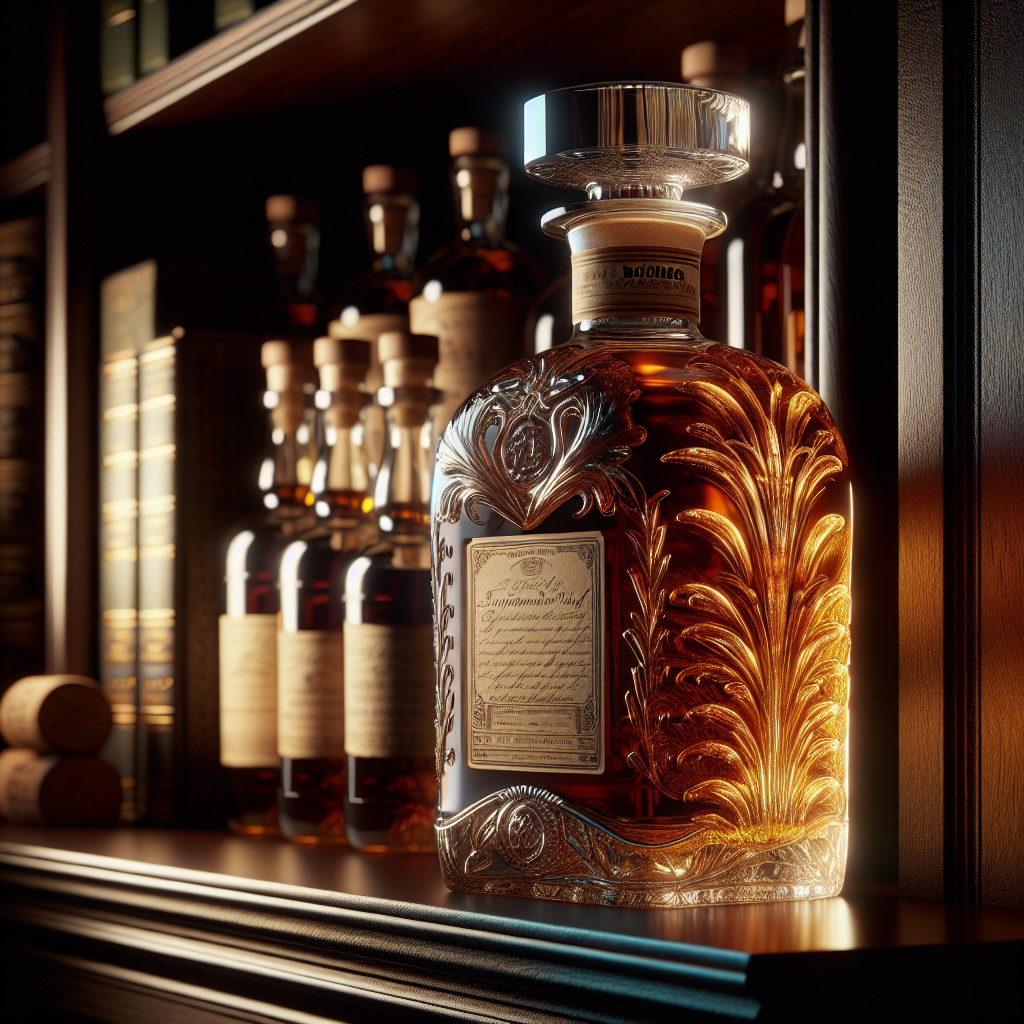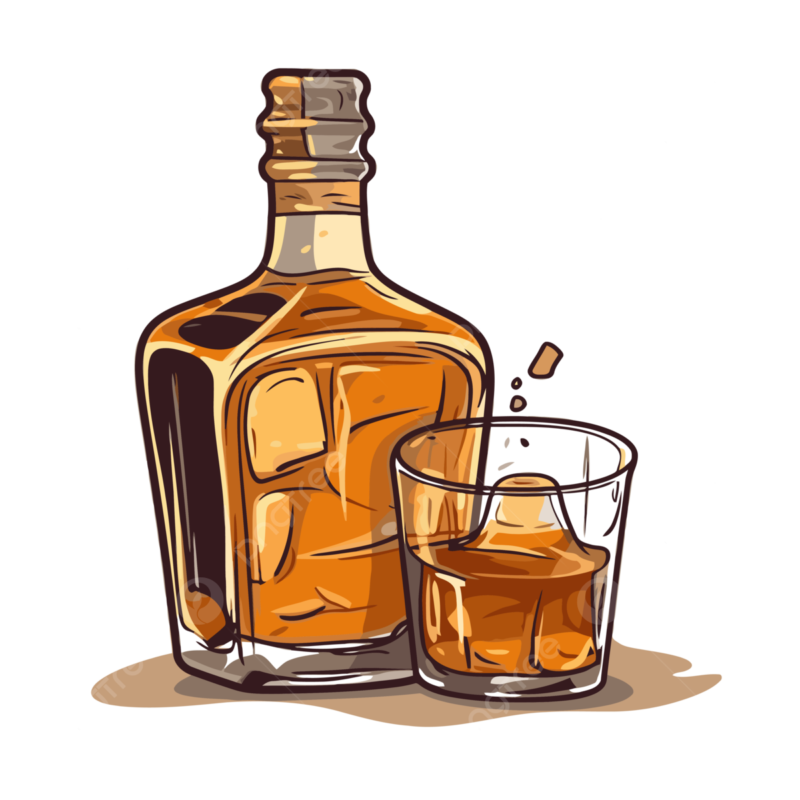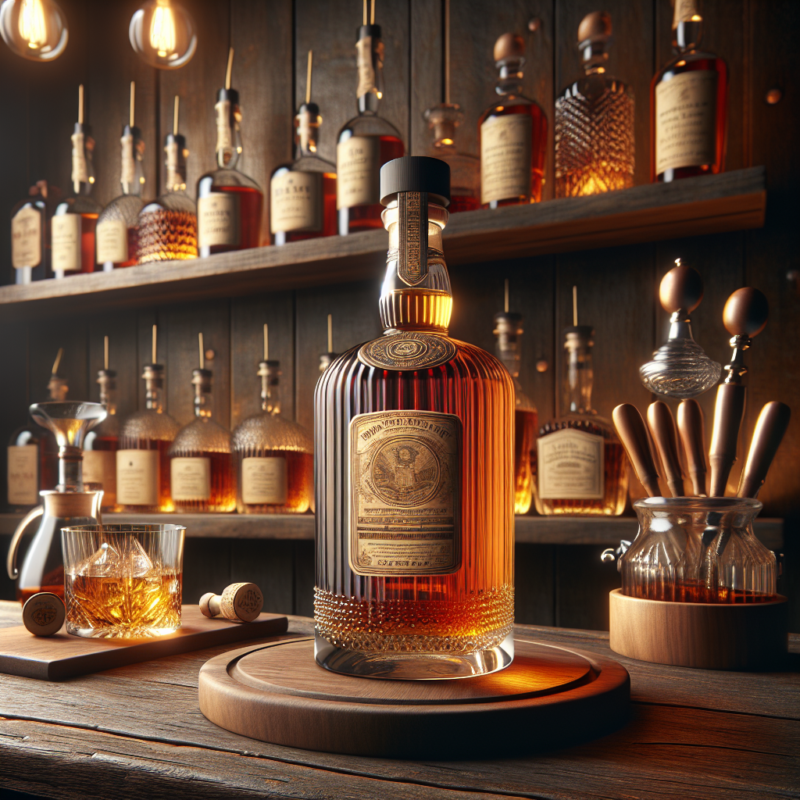Bourbon
Top shelf bourbon
The History and Evolution of Top Shelf Bourbon: From Early Distilleries to Modern Craft Brands
Top shelf bourbon. Bourbon, a type of American whiskey, has been a beloved spirit for centuries. Its rich and complex flavors have made it a staple in bars and homes alike. But not all bourbons are created equal. At the top of the bourbon hierarchy lies the coveted top shelf bourbon. These premium bottles are known for their exceptional quality and taste, and have become a symbol of luxury and sophistication. But how did top shelf bourbon come to be? Let’s take a journey through the history and evolution of top shelf bourbon, from its humble beginnings to the modern craft brands we know today.
The origins of bourbon can be traced back to the late 18th century, when Scottish and Irish immigrants brought their distilling traditions to the American colonies. The abundance of corn in the region led to the creation of a new type of whiskey, made from at least 51% corn and aged in charred oak barrels. This new spirit was named after Bourbon County, Kentucky, where it was first produced. As the popularity of bourbon grew, so did the number of distilleries in Kentucky and other states.
In the early days, bourbon was not considered a premium spirit. It was often sold in bulk and used for medicinal purposes. However, as the demand for quality whiskey increased, distillers began to focus on creating higher quality products. This led to the birth of top shelf bourbon. These were small batch bourbons, made with carefully selected grains and aged for longer periods of time. They were also bottled at higher proof, resulting in a more intense and flavorful drink.
One of the earliest top shelf bourbon brands was Old Forester, which was first introduced in 1870 by George Garvin Brown. Brown was a pharmaceutical salesman who saw the potential in selling bourbon in sealed glass bottles, ensuring its quality and consistency. This innovation set the standard for top shelf bourbon production, and Old Forester remains a top shelf brand to this day.
As the 20th century rolled in, the Prohibition era dealt a heavy blow to the bourbon industry. Many distilleries were forced to shut down, and those that survived had to adapt to the new laws. This led to the rise of bootlegging and the production of low-quality, counterfeit bourbon. However, after Prohibition was repealed in 1933, the bourbon industry bounced back and top shelf brands began to emerge once again.
In the 1950s and 1960s, the popularity of bourbon skyrocketed, with brands like Jim Beam and Wild Turkey becoming household names. These brands were known for their consistency and mass production, but they also paved the way for smaller, craft distilleries to enter the market. These craft brands focused on creating unique and high-quality bourbons, often using traditional methods and locally sourced ingredients.
Today, the top shelf bourbon market is thriving, with a wide range of brands and styles to choose from. Some of the most popular top shelf brands include Pappy Van Winkle, Blanton’s, and Woodford Reserve. These brands are known for their exceptional taste and limited availability, making them highly sought after by bourbon enthusiasts.
In recent years, there has been a resurgence of interest in traditional bourbon-making techniques, leading to the rise of small batch and single barrel bourbons. These top shelf brands are often handcrafted and aged for longer periods of time, resulting in a more complex and nuanced flavor profile.
In conclusion, top shelf bourbon has come a long way from its humble beginnings in Bourbon County, Kentucky. From the early distilleries to the modern craft brands, the evolution of top shelf bourbon is a testament to the enduring popularity and quality of this beloved spirit. Whether you prefer a classic brand or a unique craft bourbon, there is no denying the allure and prestige of a top shelf bottle. So next time you’re looking to treat yourself or impress your guests, consider reaching for a top shelf bourbon and savoring the rich history and flavors it has to offer.
Exploring the Different Aging Techniques Used in Top Shelf Bourbon: Charred Barrels, Solera Method, and More

Bourbon is a type of whiskey that is beloved by many for its rich and complex flavors. While all bourbons must be aged in new, charred oak barrels, there are various techniques used to further enhance the taste and quality of the spirit. In this article, we will explore the different aging techniques used in top shelf bourbon, including charred barrels, the solera method, and more.
One of the most well-known and traditional techniques used in aging bourbon is the use of charred barrels. This process involves charring the inside of the oak barrels before filling them with the bourbon. The charring process caramelizes the natural sugars in the wood, adding a layer of smokiness and depth to the bourbon. The longer the bourbon is aged in these charred barrels, the more intense the flavors become.
Another popular technique used in aging bourbon is the solera method. This method originated in Spain and is commonly used in the production of sherry and brandy. In the solera method, a series of barrels are stacked on top of each other, with the oldest bourbon at the bottom and the youngest at the top. As the bourbon ages, a portion of the liquid is transferred from the oldest barrel to the one above it, and so on. This process creates a consistent and complex blend of flavors, as the bourbon is constantly mingling with different aged spirits.
In recent years, some distilleries have started experimenting with alternative aging techniques, such as using smaller barrels or finishing the bourbon in different types of casks. These techniques can result in unique and unexpected flavors in the final product. For example, some distilleries have used barrels that previously held wine, port, or even beer to finish their bourbon. This adds a layer of complexity and depth to the bourbon, as it absorbs the flavors and aromas from the previous contents of the barrel.
Another technique that has gained popularity in the bourbon world is the use of temperature-controlled warehouses. Traditionally, bourbon is aged in warehouses that are not temperature-controlled, allowing the spirit to interact with the hot and cold temperatures of the seasons. However, some distilleries have started using warehouses that are kept at a consistent temperature year-round. This results in a more consistent aging process and can produce a smoother and more refined bourbon.
Aside from the aging techniques used, the location of the warehouse can also play a significant role in the final product. Bourbon aged in warehouses located in different parts of the distillery’s property can have varying flavors due to differences in temperature, humidity, and air flow. Some distilleries even have warehouses located near bodies of water, which can add a subtle briny note to the bourbon.
In addition to these techniques, the length of time that bourbon is aged also greatly impacts its flavor profile. While there is no set minimum age requirement for bourbon, most top shelf bourbons are aged for at least 4-6 years. However, some distilleries have started releasing bourbons that are aged for 10, 12, or even 20 years. The longer the bourbon is aged, the more time it has to interact with the wood and develop complex flavors.
In conclusion, the aging process is a crucial step in the production of top shelf bourbon. From traditional techniques like using charred barrels and the solera method to more modern approaches like temperature-controlled warehouses, each method adds its own unique touch to the final product. Whether you prefer a smoky and bold bourbon or a smooth and refined one, there is a technique out there that will satisfy your taste buds. So next time you pour yourself a glass of top shelf bourbon, take a moment to appreciate the aging techniques that went into creating that delicious spirit.
Top Shelf Bourbon Tasting Guide: How to Properly Savor and Appreciate the Complex Flavors and Aromas
Bourbon, a type of American whiskey, has been gaining popularity in recent years. With its rich history and complex flavors, it has become a favorite among whiskey enthusiasts. However, not all bourbons are created equal. There is a special category known as “top shelf” bourbons, which are considered to be the best of the best. These bourbons are aged for longer periods, made with high-quality ingredients, and are often more expensive. If you are lucky enough to get your hands on a bottle of top shelf bourbon, it is important to know how to properly savor and appreciate its complex flavors and aromas.
First and foremost, it is important to understand the basics of bourbon. By law, bourbon must be made in the United States and contain at least 51% corn in its mash bill. It must also be aged in new, charred oak barrels and bottled at a minimum of 80 proof. These regulations ensure that all bourbons have a similar base, but it is the aging process and other factors that make top shelf bourbons stand out.
One of the key factors that sets top shelf bourbons apart is their aging process. Unlike other types of whiskey, bourbon must be aged in new, charred oak barrels. These barrels impart unique flavors and aromas to the bourbon as it ages. Top shelf bourbons are often aged for longer periods, sometimes up to 20 years or more. This extended aging allows the bourbon to develop more complex flavors and aromas, making it a truly special drink.
When it comes to savoring top shelf bourbon, there are a few key steps to follow. First, it is important to choose the right glass. A tulip-shaped glass, also known as a Glencairn glass, is ideal for savoring bourbon. Its shape allows the aromas to concentrate at the top, making it easier to appreciate the complex scents of the bourbon.
Next, pour a small amount of bourbon into the glass, about 1-2 ounces. Swirl the bourbon around in the glass to release its aromas. Take a moment to appreciate the color of the bourbon. Top shelf bourbons are often a deep amber or mahogany color, indicating their long aging process.
Now it’s time to take a sip. Take a small sip and let it sit on your tongue for a few seconds before swallowing. This allows the flavors to fully develop on your palate. Top shelf bourbons often have a smooth and complex taste, with notes of caramel, vanilla, oak, and spice. Take note of the flavors you taste and how they evolve as you continue to sip.
To fully appreciate the aromas of top shelf bourbon, it is important to also smell it. After taking a sip, take a moment to smell the bourbon in your glass. The aromas may be different from the flavors you taste, and this adds to the complexity of the drink. Some common aromas in top shelf bourbon include caramel, toffee, oak, and dark fruits.
As you continue to savor your top shelf bourbon, it is important to take your time and enjoy it. Don’t rush through your glass, but instead, take small sips and let the flavors and aromas linger on your palate. You may also want to try adding a few drops of water to your bourbon, as this can help open up the flavors and aromas even more.
In conclusion, top shelf bourbon is a truly special drink that deserves to be savored and appreciated. Its complex flavors and aromas are the result of years of aging and high-quality ingredients. By following these tips, you can properly savor and appreciate the unique qualities of top shelf bourbon. So next time you have the opportunity to try a top shelf bourbon, take your time and enjoy every sip.

